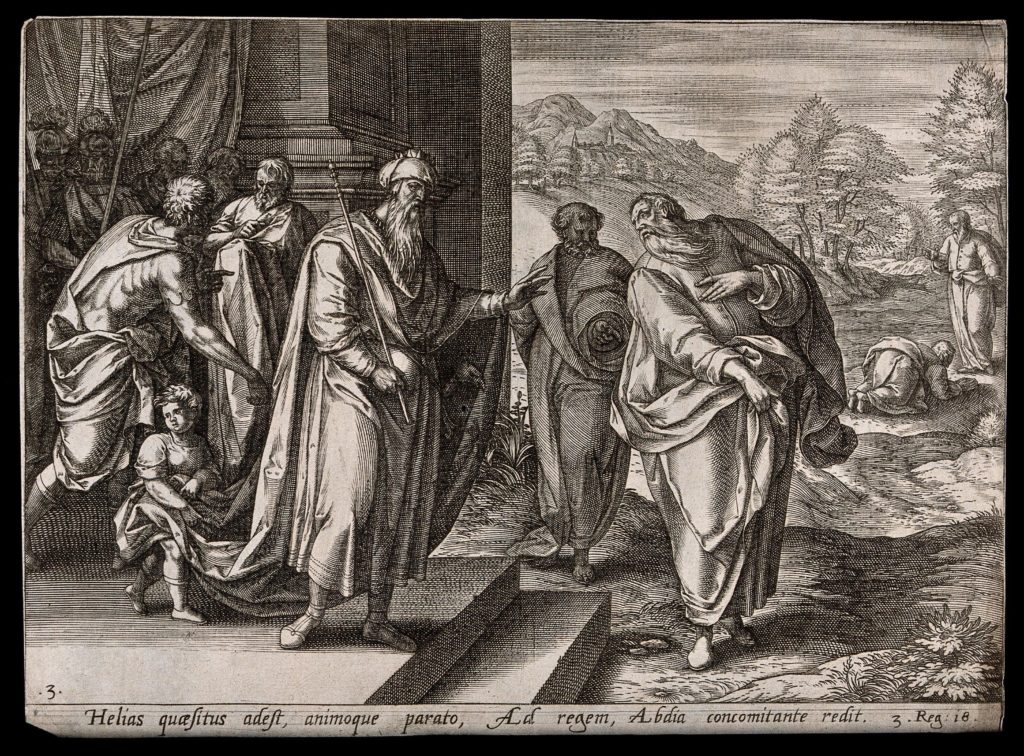Chariots of Fire

With a name meaning “The Lord is my God,” St. Elijah is regarded as one of the most popular and influential prophets and miracle-workers of the Old Testament. Sharing God’s messages and warnings with the people of the Northern Kingdom, located in modern day Israel, Elijah lived during the time of kings Ahab and Ahaziah, roughly between 948 and 900 BC.
Both Elijah and his successor Elisha are said to be Christological characters, pointing forward to the coming figure of Jesus. Elijah and Elisha worked hard to preach the Word of Yahweh despite the persistent Canaanite Baal worship of the time. Elijah especially is understood to have walked close to God, obeying him, listening to him, and receiving his provision. Through God’s help, he also performed numerous miracles such as causing rain to cease and fall again (1 Kings 17:1, 1 Kings 18:44-46), ushering fire down from the sky (2 Kings 1:10, 1:12), and praying for the resurrection of the dead son of a widow (1 Kings 17:17-24).
One only has to read Elijah’s story throughout the chapters of the Books of Kings to see all of the ways that God cared for the prophet and how Elijah in turn leaned close to him. This relationship is pretty significant considering that Elijah even appeared with our Lord during the Transfiguration! Yet the Bible’s description of their intimate connection to one another does not mean that Elijah was some super-human or otherworldly being. In fact, James 5:17 emphasizes this point, asserting Elijah’s humanity and similarity to ordinary folks like you and me.
Elijah’s Old Testament story further illuminates many of his struggles and flaws. One of the most prominent examples is when Elijah, faced with a death threat, fled to the wilderness in great fear and concern for his life. Finally finding himself at Mount Horeb, the mountain of God, Elijah met God, who comforted him and sent him back to the ministry despite his discouragement.
Elijah’s account reminds us of the way our Lord also yearns to bring us close to Him and to lead us in the life he has planned for us.
Even Elijah’s “death” underscores the role of Lord’s will in his life as his last act was being swept up into heaven by horses and chariots of fire. In his wake, his cloak fell to the ground and a double portion of his spirit was bestowed upon Elisha. Enoch and Elijah are the only two people besides Jesus who are recorded in Scripture as being taken into heaven without dying.

A Brief History
Similar to our description of the ways that Elisha’s June 14th day fits into the Church’s annual rhythms of Ascension and Pentecost, we can see that Elijah’s July 20th date is similarly thematic because of its placement in the middle of the summer. His saintly story connects stories and themes from the Old Testament to those of the New Testament, and his narrative (his high points and low points) also remind us of the human nature of all the saints and apostles we celebrate during this season.
Although his date is a new addition to the Lutheran liturgical calendar and Elijah is just one of the many Old Testament saints whom the LSB includes in the summer months, don’t get the impression that his story is insignificant! Instead, we encourage you to read through and reflect upon his rich prophetic acts in 1 Kings 17-19 and 2 Kings 1-2 and to think about the way that our Lord continues to use Elijah and his story to teach us about his communion with us.

Collect
O Almighty God, who hast knit together Thine elect in one communion and fellowship in the mystical body of Thy Son Jesus Christ, our Lord: grant us grace so to follow Thy blessed saints in all virtuous and godly living, that we may come to the unspeakable joys which Thou hast prepared for those who unfeignedly love Thee; through the same, Jesus Christ, Thy Son, our Lord, who liveth and reigneth with Thee and the Holy Ghost: ever one God, world without end. Amen.
Resources
Issues, Etc. interview with the Rev. Dr. Kevin Golden on Old Testament Prophet Elijah
Issues, Etc. interview with the Rev. Dr. Walter A. Maier III on the Prophet Elijah
Propers found in Daily Divine Service Book: A Lutheran Daily Missal, edited by the Rev. Heath Curtis
References:
1. Weedon, William. Celebrating the Saints. Concordia Publishing House. 2016.
Images:
1. Elijah is led to his confrontation with King Ahab, Unknown, Unknown, 16th century.
2. The Prophet Elijah Receiving Bread and Water from an Angel, Peter Paul Ruebens, The Netherlands, 1625-1628.
3. Elijah Taken Up in a Chariot of Fire, Giuseppe Angeli, Italy, c. 1740/1755.
Some links might be affiliate links which means we may receive a small commission at no extra cost to you. As an Amazon Associate we earn from qualifying purchases.




[…] we discussed in Elijah’s post, this prophet is one of the most well-known and recognizable figures of the Old Testament. He also […]